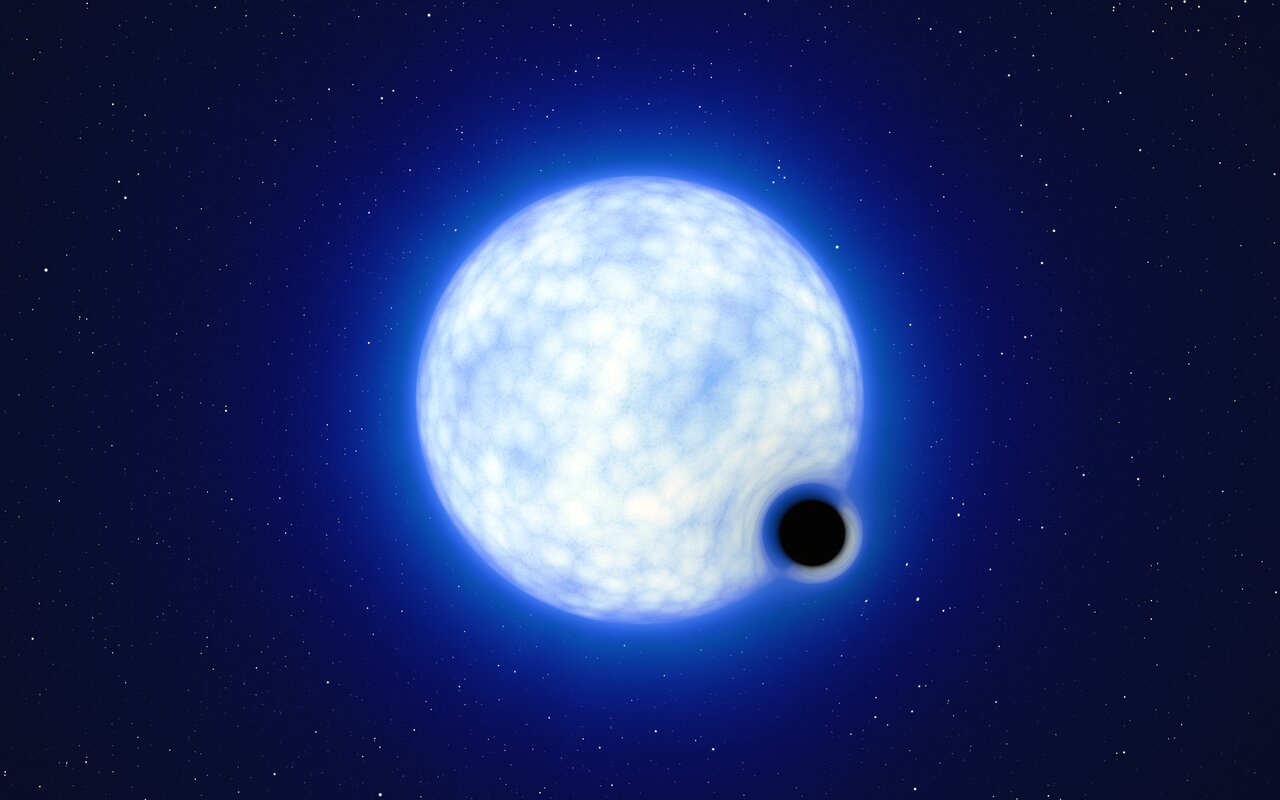A dormant (dormant is something that is not active) black hole has been discovered by astronomers. This black hole is located about 160,000 light years from Earth. (The distance travelled by light in 1 year, which is about 5.9 trillion miles or 9.5 trillion km is called a light year.) It was spotted in the Tarantula Nebula region which is located in the Large Magellanic Cloud Galaxy adjacent to the Milky Way Galaxy.
A study about this black hole has been published by the journal Nature Astronomy.
One of the unique things about this black hole is that unlike normal black holes, it has been birthed without a supernova (the end of a stars life).
Normally, a black hole emits powerful X-ray radiation signifying its consumption of material around it by its strong gravitational pull.
But this one has not emitted any powerful X-ray radiation.
The mass of this black hole is about 9 times the mass of the Sun.
The black hole orbits in a pair with an extremely hot and luminous blue star. The blue star has 25 times the mass of the Sun. This pair, which is a binary system, is called VFTS 243.
A binary system is a system of 2 astronomical bodies that are gravitationally bound.
Dormant black holes are hard to find, despite the fact that they are common, as they interact very little with their surroundings.
The lead author of the study, Dr. Tomer Shenar, said that this black hole was a needle in a haystack.
Dr. Kareem El-Badry of the Harvard & Smithsonian Center for Astrophysics said that after decades of searching, this was the first black hole of its kind.
The last 6 years’ observations from the European Southern Observatory’s Chile-based Very Large Telescope had been used by the researchers.
The newly discovered black hole has been identified as a stellar mass black hole.
There are also super massive black holes and some other types that lie at the centre of different galaxies.
Dr. Tomer Shenar explained how they identified the lack of a supernova. He said that the orbit of the black hole was almost perfectly circular, whereas if a supernova event had taken place, the orbit of the black hole would be elliptical.
Image Credit: ESO

